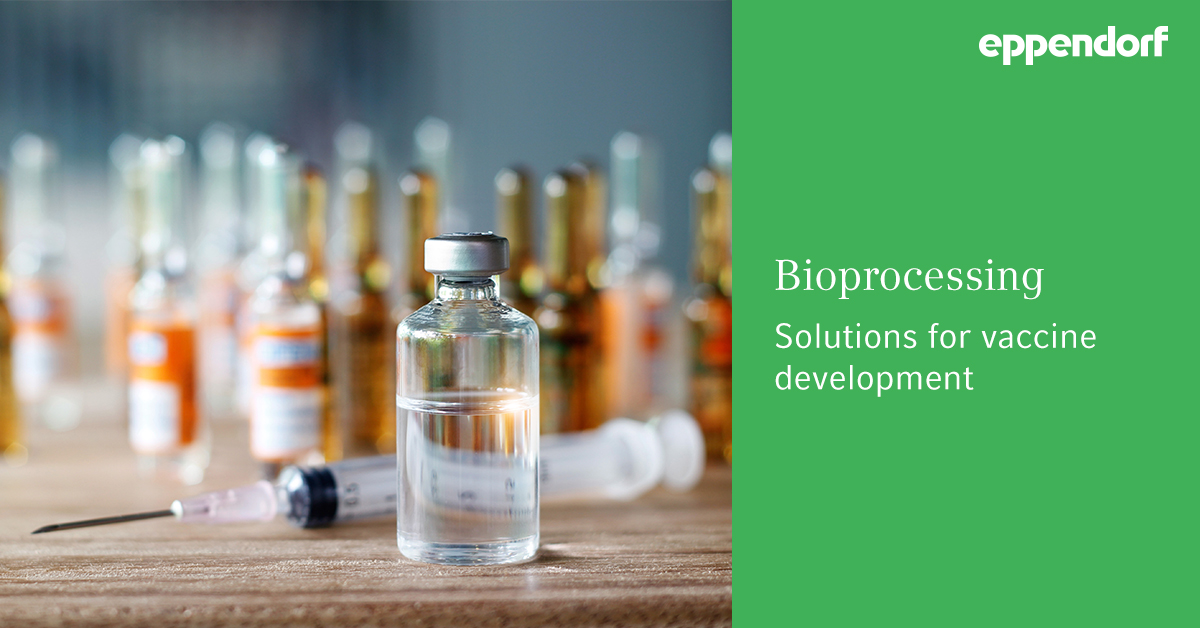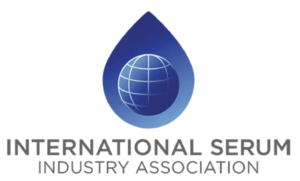
The Dish’s Biotechnology News Wrap Up – December 9, 2022
This week’s headlines include: COVID-19 forced us to reimagine the pharma supply chain – and that’s a good thing, FDA updates statistical approaches for assessing bioequivalence, Pfizer partners with Clear Creek Bio to develop oral COVID-19 drug, GSK, Sanofi, Takeda sign with Singapore partnership to advance biologic manufacturing, FDA expected to decide on Pfizer RSV vaccine for older adults by May 2023, As Flu, RSV And Covid-19 Tripledemic Surges, Drug Shortages Are Impacting Children Most, and SonoThera Bags $60M for Ultrasound-Guided, Non-Viral Gene Therapy.
Podcasts:
Check out our podcast channel. We have over 50 great podcasts covering drug discovery, stem cell culture, upstream and downstream biomanufacturing and more! Click below to download from iTunes or Google play:
![]()
![]()
In Case You Missed It, Recent Articles on Cell Culture Dish and Downstream Column:
![]()
New Technology Solutions for Lentiviral Vector Clarification
The growth of the cell and gene therapy sector, and the growing number of gene and gene-modified cell therapies entering the market has translated into an increased global demand for lentiviral vectors (LVs) as a gene delivery tool. There are currently two FDA approved LV-based cell and gene therapy products—Kymriah® (Novartis) and ZYNTHEGLO® (bluebird bio), and according to the Alliance for Regenerative Medicine, an estimated 48% of the ongoing cell and gene therapy clinical trials use lentiviral vectors, with a significant number in late-stage evaluation1. The strong pipeline of LV-mediated gene and CAR-T cell therapy products headed towards market approval means the development of efficient LV vector purification methods to improve yield and recovery is needed to meet the growing demand while also driving down the cost of production2,3. The critical first step in the downstream process is clarification of the viral bulk, which aims at removal of cell and cell debris and to reduce turbidity of the solution. Since each process step potentially reduces the quantity of infectious LVs, effective clarification helps minimize LV vector loss from the outset of the downstream process to maximize final product recovery4. In this publication, we will examine counterflow centrifugation (CFC) as a scalable technology solution to achieve high throughput and high yield clarification of infectious LVs…
Biomanufacturing Quality Management Systems – A holistic approach
In this podcast, we interviewed Katie Keller, Director of Quality and Safety at Asahi Kasei Bioprocess America, about the importance of quality management and how to achieve the best possible results. Topics included the most critical elements of quality management, how to ensure the purchase of high-quality equipment, and future trends…
Flexible single-use mixers are key to achieving a next level mixing experience and reducing delivery lead times
In this podcast we spoke with Klaus Kienle, Global Product Manager for the Mixing portfolio at Pall Corporation about the latest mixing technologies including single-use solutions, the need for increased flexibility, and a more standard vendor agnostic approach…
Bioprocessing Solutions to Accelerate Mammalian Cell-Based Vaccine Development
Vaccination remains one of the most effective methods to combat infectious viral diseases such as influenza. The recent COVID-19 crisis has placed unprecedented pressure on the vaccine industry to develop and deploy vaccines against emergent diseases faster than ever before. An eBook, Solutions for Vaccine Development, released by Eppendorf has been created to provide the reader with an in-depth understanding of how the COVID-19 pandemic has irreversibly altered the landscape of global vaccine development. The content includes application notes, product guides, and expert insights to accelerate your vaccine research and development…
Manufacturing high concentration mAbs challenges and solutions
In this podcast, we spoke to Tom Watson, Group Leader, Product Management – Biotech Division, Gregor Kalinowski, Manager SLS Purification Consultants Europe, and Aude Iwaniec, R&D Bioprocessing Team Leader, all from Pall Corporation, about why high concentration mAbs are an increasingly important part of the biotech landscape, current manufacturing challenges and solutions, and future trends…
Future Proofing Downstream Bioprocess Operations
Historically, downstream bioprocesses have been simpler than upstream bioprocesses. They were more manual and Protein A columns permitted a simple and effective purification solution for monoclonal antibodies and protein-based therapeutics. More recently, upstream bioprocesses have undergone significant improvements in process and subsequently yield. These improvements in upstream created bottlenecks in downstream as the systems in place were not prepared to adjust to changes in both the starting material from upstream and yield. As a result, downstream bioprocesses have had to evolve to meet the needs of these new challenges by incorporating technology advancements such as single-use technologies, improved chromatography solutions, continuous processing, advanced buffer management systems, increased automation, and many others…
A Guide for Navigating the Single Use Technology Supply Chain
In this podcast, we spoke with Emanuel Krobath, Biopurification Specialist and Chiara Pacini, Bioprocess Specialist both with Pall Corporation about gene therapy process development including challenges and resources that are available for support…
VEGA VEGAPOINT 21®– a non-contact probe for point level control in hygienic bubble traps
Gas bubbles in process fluids and buffer solutions are a common yet significant problem in bioprocessing because they can alter the microfluidic environment and negatively impact downstream chromatography steps. They can impede the flow through the resin column and limit contact with the resin in the resin bed, which can decrease separation efficiency and resolution. A hygienic bubble trap is a device that effectively separates gas bubbles from process fluids by allowing the bubbles to rise to the top of the fluid (Figure 1). Effective separation of gas bubbles relies on accurate monitoring and control of the fluid level in the bubble trap—this is where level sensors come in. The working volume of a bubble trap is typically 60-80% of its total volume, and the fluid should have a residence time of approximately 15 seconds. If the level is too low, the gas bubbles don’t have sufficient residence time to be effectively removed from the process fluid and the bubbles may pass with the process fluid through the bubble trap outlet. Conversely, if the level of the fluid is too high, fluid and bubbles can be drawn into the gas vent line and cause problems with contamination…
Fit for Purpose AAV Purification – Realizing the Perfect Scale for Cell and Gene Therapies
The explosive advancements within the cell and gene therapy sector have the driven the demand for high-quality GMP-compliant viral vector manufacturing. Adeno-associated virus (AAV) has been the primary vector driving this growth, as well as to a lesser extend lentivirus (LV) and adenovirus (AV). The use of these vectors is expected to grow fast also in the future and to diversify to include other therapies, such as oncolytic viruses…
White Paper:
 Vaccination remains one of the most effective methods to combat infectious viral diseases such as influenza. The recent COVID-19 crisis has placed unprecedented pressure on the vaccine industry to develop and deploy vaccines against emergent diseases faster than ever before. An eBook, Solutions for Vaccine Development, released by Eppendorf has been created to provide the reader with an in-depth understanding of how the COVID-19 pandemic has irreversibly altered the landscape of global vaccine development. The content includes application notes, product guides, and expert insights to accelerate your vaccine research and development.
Vaccination remains one of the most effective methods to combat infectious viral diseases such as influenza. The recent COVID-19 crisis has placed unprecedented pressure on the vaccine industry to develop and deploy vaccines against emergent diseases faster than ever before. An eBook, Solutions for Vaccine Development, released by Eppendorf has been created to provide the reader with an in-depth understanding of how the COVID-19 pandemic has irreversibly altered the landscape of global vaccine development. The content includes application notes, product guides, and expert insights to accelerate your vaccine research and development.
To Download the full ebook, see Solutions for Vaccine Development
Training Video:
Headlines:
“COVID-19 forced us to reimagine the pharma supply chain – and that’s a good thing,” BioNews
There is little doubt the pandemic exposed the cracks in a supply system that needed to be renovated. And these cracks are further expanded by the looming economic recession – which is not driven by capital or worker shortage but a shortage of goods…
“FDA updates statistical approaches for assessing bioequivalence,” Regulatory Focus
The US Food and Drug Administration (FDA) has published a draft guidance updating its principles for assessing in vivo or in vitro bioequivalence studies (BE) for investigational new drugs (INDs), new drug applications (NDAs), abbreviated new drug applications (ANDAs) and supplements to these applications…
“Pfizer partners with Clear Creek Bio to develop oral COVID-19 drug,” Reuters
Pfizer Inc and Clear Creek Bio Inc on Tuesday announced a collaboration to identify a potential drug candidate and develop a new class of oral treatment against COVID-19, as Pfizer seeks to expand its anti-infective pipeline…
“GSK, Sanofi, Takeda sign with Singapore partnership to advance biologic manufacturing,” FiercePharma
Global pharma giants GSK, Sanofi and Takeda signed on with with a partnership of agencies to advance biologic manufacturing in Singapore. The production partnership is through the Biologics Pharma Innovation Programme Singapore (BioPIPS), which is a consortium started by A*STAR with support from the Singapore Economic Development Board…
“FDA expected to decide on Pfizer RSV vaccine for older adults by May 2023,” CNBC
The Food and Drug Administration is expected to decide by spring whether to approve Pfizer vaccine to prevent respiratory syncytial virus, or RSV, in adults ages 60 and older. Pfizer, in a statement Wednesday, said the FDA has accepted its RSV vaccine candidate for review under an expedited process that reduces the approval timeline by four months. The FDA is expected to make a final decision on whether to approve the vaccine by May 2023…
“As Flu, RSV And Covid-19 Tripledemic Surges, Drug Shortages Are Impacting Children Most,” Forbes
In the U.S., all but 6 states are currently experiencing “high” or “very high” respiratory virus levels. The nation is faced with a so-called “tripledemic” of ongoing Covid-19, which is leading to increases in hospitalizations once again in certain areas; influenza, which has re-emerged in full fury nationwide after a two year absence; and respiratory syncytial virus (RSV), which is already nearing seasonal peak levels in a growing number of regions of the country…
“SonoThera Bags $60M for Ultrasound-Guided, Non-Viral Gene Therapy,” BioSpace
South Francisco, California-based start-up SonoThera closed its Series A round of financing Monday, counting $60.75 million in earnings to advance its ultrasound-guided, non-viral gene therapy platform. The funding round was led by ARCH Venture Partners. SonoThera also counts several industry heavy-hitters among its supporters, including Johnson & Johnson Innovation – JJDC, Inc., Illumina Ventures and Eli Lilly & Company. Other funders included Medical Excellence Capital, Alexandria Venture Investments and Vertex Ventures HC…
